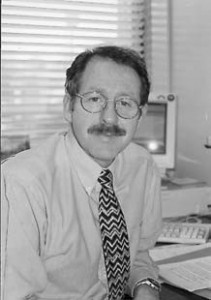The EPEA History, written May 2003
By Paddy Rocks, N Ireland
The EPEA was 10 years old in 2001. The first Steering Committee came together in Bergen, Netherlands, after two years of hard work by individuals who had discussed the idea at an international conference on Prison Education in Oxford in 1989. Working on a model already established in America (the Correctional Education Association), they were keen to do something similar, and suggested the idea of setting up an organisation that would also help to turn the aspirations of the new Council of Europe report “Education in Prison,” into a working reality. Among other important recommendations, that report had identified a need for contact by prison educators across national boundaries.
Under an ancient copper beech tree, this idea was explored by a group of five ? Pam Bedford from England, Gayle Gassner (then President of the CEA), Henning Jorgensen of Denmark, Asbjorn Langas of Norway and Kevin Warner of Ireland. A larger, hurried meeting in a garden gave enthusiastic backing to the project.
An ad hoc group was given the task of moving the idea forward. On behalf of this group, Henning Jorgensen wrote to every prison administration in the Council of Europe countries, seeking the nomination of two liaison persons from each country. One of these liaison persons had to be an educator “in daily contact with prisoners”. Sixteen countries responded.

Progress was slow for two years or so. A Magazine was started and contacts were built up. However, at the conference in Bergen, Netherlands, in 1991, the liaison persons present agreed the main aims for the EPEA
To promote education in prison according to the Recommendation, R (89) of the Committee of Ministers to member States of the Council of Europe (1989), (i.e. according to the report, “Education in Prison”.
To support and assist the professional development of persons involved in education in prison through European co-operation.
- To work with related professional organisations.
- To support research in the field of education in prison
- At Bergen, also, the ad hoc group gave way to a Steering Committee consisting of the liaison persons from seven countries.
Thus the EPEA was formed. By the time of the next gathering of liaison persons (what is now called the General Council) at the Swedish EPEA conference, in Sigtuna in 1993 a great deal of work had been done by the new Steering Committee. A constitution was drafted, contacts were strengthened, and new countries, notably the newly independent Baltic countries, joined up.
After a successful conference in Blagdon, England in 1995, the constitution really started to take effect, and many of the original architects of the EPEA were gradually replaced by new elected officers. Svenolov Svensson, as Chairperson headed a team that produced an ambitious plan (Vision 2006) for the EPEA. This assisted greatly in further bringing in a sense of organisation by setting clear objectives, tasks and timescales. Roles were defined, and the production of a members? Magazine, to be produced 2-3 times per year, was added to the list of communication channels. A very successful conference in Budapest, Hungary in 1997 saw the first meeting of Liaison Persons, with the aim of holding regular gatherings. The first of these took place in Malta in 1998.
Around about the same time the first efforts were made at setting up an internet website with the potential to reach members directly. This has improved slowly over the years, and was recently given a great boost by being taken over and more professionally managed by Per Thrane from Denmark.
In 1999 the conference was held in Greece, and two years later the 8th International EPEA conference took place in Netherlands. During the intervening years the organisation, largely thanks to the work of Janine Duprey-Kennedy, succeeded in its application to be granted official status as a non-governmental organisation (NGO) by the Council of Europe.
This has assisted the EPEA to be recognised as an authentic voice in the field of prison education in Europe. In January 2001, a second planning committee meeting in Belfast, N Ireland, agreed a Review of Vision 2006, and put in place a positive revised Action Plan with bold targets to improve the standing of the EPEA in the areas of communication, promotion, research and finance. A 2-year Action Plan delivered the following
- Financial stability
- Guidelines for forming a local branch
- A Liaison Persons’ meeting in Paris
- An improved Directory of members
- A printable version of the Council of Europe Report on Prison Education
- The translation of Recommendations into a variety of European languages
- An increase in membership fees
- A successful application for European Funding
- A professional brochure
- An improved EPEA website (www.epea.org)
Throughout the years, regular magazines have been produced in various countries every six months by hard-working members. The standard of contribution is high, and reflects the work and practice of teachers across Europe, as well as research and information about changes in policy. In April 2003, Magazine No.25 was produced in Estonia.
The Steering Committee has been subject to substantial change over the years in accordance with the constitution. However it has continued to meet twice a year and has often been supported in terms of accommodation by local administrations. Meetings have been held in Denmark, N Ireland, France, Scotland, Holland, Sweden, Norway, Ireland and Malta. A proposed meeting in Bulgaria in 2002, with the secondary aim of promoting development there, had to be relocated. The most recent meeting in Malta was combined with a meeting to work on the EPEA?s European-funded (Grundtvig) project to develop a network of branches. The huge amount of work undertaken by individual officers has been crucial to the survival and success of the EPEA since its early beginnings, and that is still true today. Over the years SC members have regularly and consistently given their weekends every 6 months (and many hours in between) to keep the organisation running. It hasn?t always been hard work, though, and many good evenings have been enjoyed in unfamiliar places. Many good and lasting friendships have also developed.
In the last ten years, since Sigtuna, the EPEA has come of age. There are over 500 individual members in around 40 counties worldwide, and an estimated 400+ in organisations. In 2003 there are first time members in the Isle of Man and Poland, and given the number of local members, branches can now be formed in Albania and Bulgaria. Norway, thanks largely to the work of Torfinn Langelid, has now 144 members and its own thriving national branch called FOKO. The EPEA has developed into a mature, established and highly regarded organisation, and it is now recognised as the standard-bearer for prison education in Europe.
Unfortunately in the course of those years, it has lost some if its most notable voices, and in the last year Henning Jorgensen, who was dedicated to the idea of a Europe-wide body and the concept of holistic education for all prisoners, sadly passed away.
The Future
The coming years look promising for the EPEA. The strength of its constitution, its improving financial security, along with its Council of Europe status and EU project funding, all augur well. All the signs point to the continued dedication by individuals in planning, promoting and managing the seemingly endless cycle of tasks and, through these, to continued growth in membership. However there will always be work to be done.
A great obstacle in previous years has been the problem of connecting people across Europe, particularly between conferences, to assist teachers in exchanging ideas and sharing good practice. However, so much is now possible with the constant advance of technology, and what would have seemed impossible 10 years ago is now commonplace. No doubt there will be more and more communication and access to information through the website, and it is clearly essential that this continues to be properly managed and maintained.
The success of the organisation has until now depended on the quality of local branch organisation, and it has been for this reason that, in recent years, the SC has promoted a number of meetings specifically for Liaison and Contact Persons. Perhaps there is scope for developing direct contact with members through the website as a means of closing the gap between the membership and the Steering Committee, and providing them with a means of being directly involved in the organisation.
There is every likelihood that the growth in the number of member countries with branches, particularly from Eastern Europe, will sooner or later necessitate a reorganisation of the EPEA map, with an inevitable increase in the number of regions. As with members, there is a growing need to demarginalize these countries, and to build on the great potential they hold in advancing the aims and objectives of the EPEA. The importance of this growth and getting its organisation right is at the centre of the European funded Grundtvig project to develop strong branches in many countries. Indeed, as established prison systems are increasingly valuing education for its role in helping to achieve more functional and political ends, these countries may well be important in helping the EPEA to maintain its key fundamental principles.
Paddy Rocks
Chairperson May 2003
